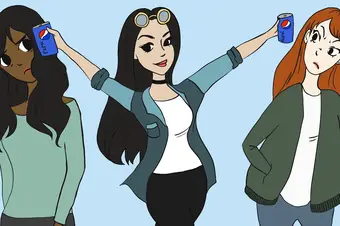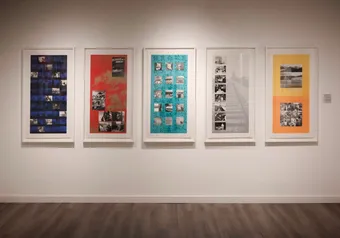The latest Pepsi ad, featuring Kendall Jenner, begins with a street protest resembling Black Lives Matter, the Women’s March or any other of the many angry movements sweeping the world. Everyone is dancing, playing instruments, taking pictures and, of course, sipping Pepsi.
Amidst frames of the jolly protest, Kendall Jenner joins the group like its triumphant leader. Towards the end of the ad, as she approaches a wall of attractive police officers, the crowd watches with bated breath. She hands one of them a can of Pepsi. He cracks it open and takes a sip. The crowd goes wild. Jenner hugs and high-fives her fellow protesters because, apparently, harmony has been restored.
[Sorry, video not found. You can contact webmaster@ubyssey.ca to fix the issue]
The ad, obviously, gets a lot wrong. There are many egregious errors to examine, but according to Dr. Rima Wilkes — a professor studying civil disobedience and media representations of race in UBC’s sociology department — the problems start with the inauthentic diversity of the group.
"It’s too overtly politically correct. The diversity doesn’t look right,” she said.
In fact, the crowd is so diverse, each person in the crowd token-ized to represent a specific identity, that it blurs all connection to place or movement. Is it a Black Lives Matter march? An environmental protest? Is it in New York? Toronto?
To Wilkes, the crowd also looks too privileged.
“This ad is about protest as a way of expressing coolness,” she said. “Those aren’t the people we should be celebrating. We should celebrate the people who are putting in so much work and whose lives are on the line.”
This is perhaps what makes Jenner such an abhorrent representative of youth-driven protest. Even if you had never heard of her, her privilege as a high-paid fashion model is established within the ad.
“There’s no risk for [Jenner],” said Wilkes, referring to Jenner’s laid back, happy attitude in the protest. “The idea that the good looking, flirty [white] woman doesn’t have to worry is the reality and that’s a very offensive reality.” But in truth, “the cops are killing people.”
Aside from its canned diversity and anti-hero in Jenner, the ad doesn’t look like a real protest because the police don’t look real.
“If this was a real stand-off with the police, they wouldn’t have baseball caps on. It’s not like that at all. They’d be in full riot gear and they’d be very aggressive.”
The reality is that protesters don’t have as easy access to the police as Jenner makes it seem. Wilkes referenced the 1997 Asian-Pacific Economic Cooperation summit held at UBC, where protesters marching for human rights and better economic regulations were beaten, pepper-sprayed and arrested.
“[The police] are building walls so that people can’t protest and they’re having major international events in locations that no one can go to. They’re doing background checks and leaders of protests are being tracked by the police,” she said.
Pepsi — a multi-billion-dollar multinational corporation — representing itself as the logo for dissent and protest is all wrong too.
“I can’t think of too many [protest] movements that are pro-capitalist. Real young people in a real protest simply wouldn’t rally around a product like the way they do in this ad. Pepsi’s goal, then, is about branding.
“They want you to think, ‘I’m like these people! I’m young and good looking and cool!’” said Wilkes. “This kind of insidious branding is everywhere. This commercial is getting picked on, but there’s an element of randomness to that. This isn’t the first commercial to have problematic representation.”
Wilkes critiqued everything from Dove’s Real Beauty campaign to Daddy’s Home, a 2015 movie starring Will Ferrell. “You could ask, ‘How did this get approved? How did nobody see this was bad?’ for everything, for every single Hollywood film. But whiteness is ubiquitous in our culture.”
We should ask why some ads do get away with offensive imaginings of diversity and capitalist-driven branding. In many ways, Pepsi’s ad tries (and fails) to be like the the famous 1970s Coca-Cola ad which featured young people of all backgrounds and races holding hands and singing ‘I’d like to give the world a Coke.’ The ad was incredibly successful and branded Coke as a young-people friendly, hip company.
On the flip side, there are pictures like the one taken at a Black Lives Matter protest in Baton Rouge, where Ieshia Evans stands in a long, flowing dress, proud and composed, in front of a swarm of police in riot gear. This image more accurately represents what it means to truly stand up and voice dissent in our culture today, and is clearly the inspiration for the smarmy moment in Pepsi’s ad where Jenner approaches the police.
The difference seems to be that in real life, a can of Pepsi, or any other corporate product for that matter, doesn’t solve systemic issues of inequality. Real protests, with authentic, angry protesters on the other hand, do.
First online
Share this article








